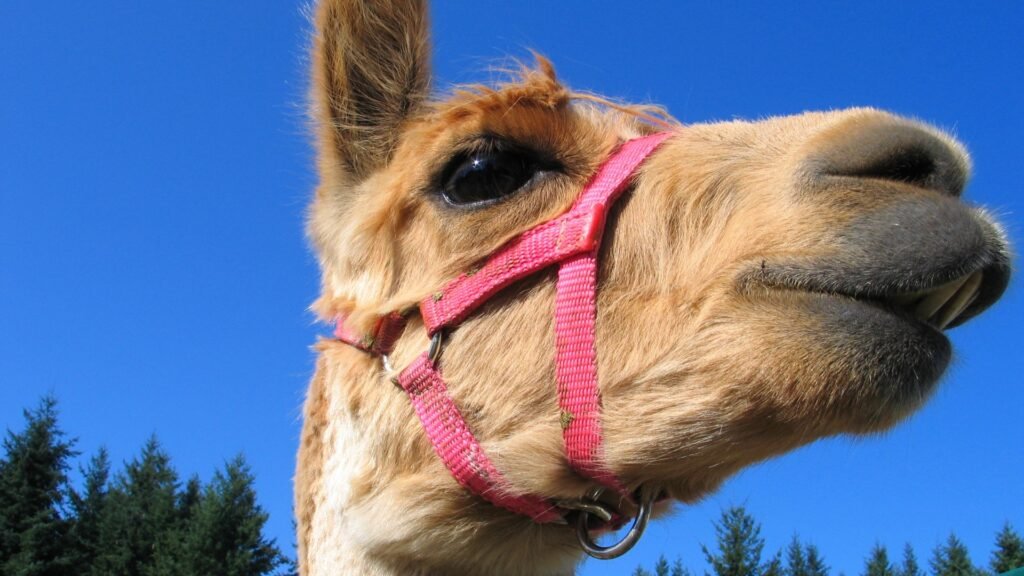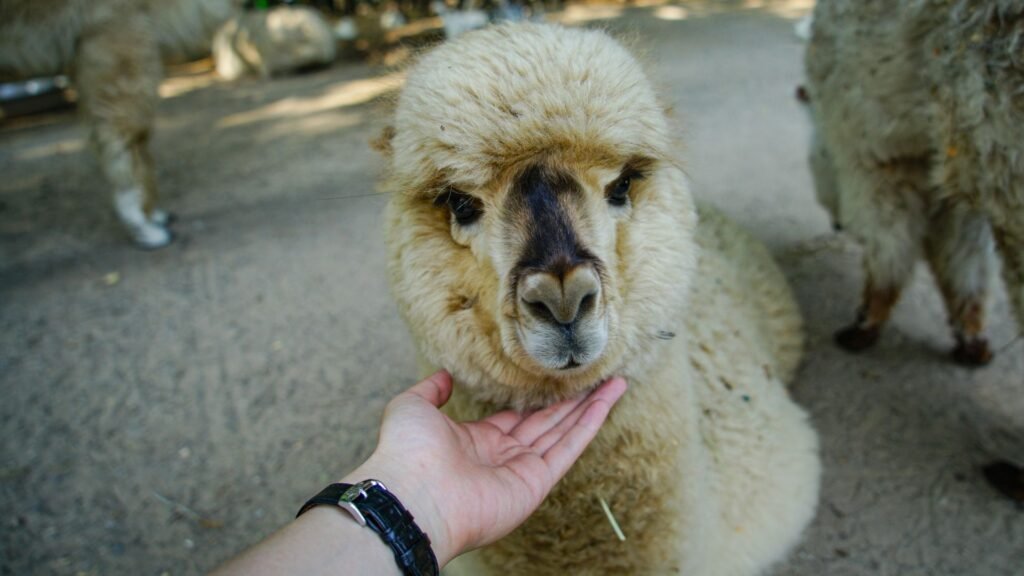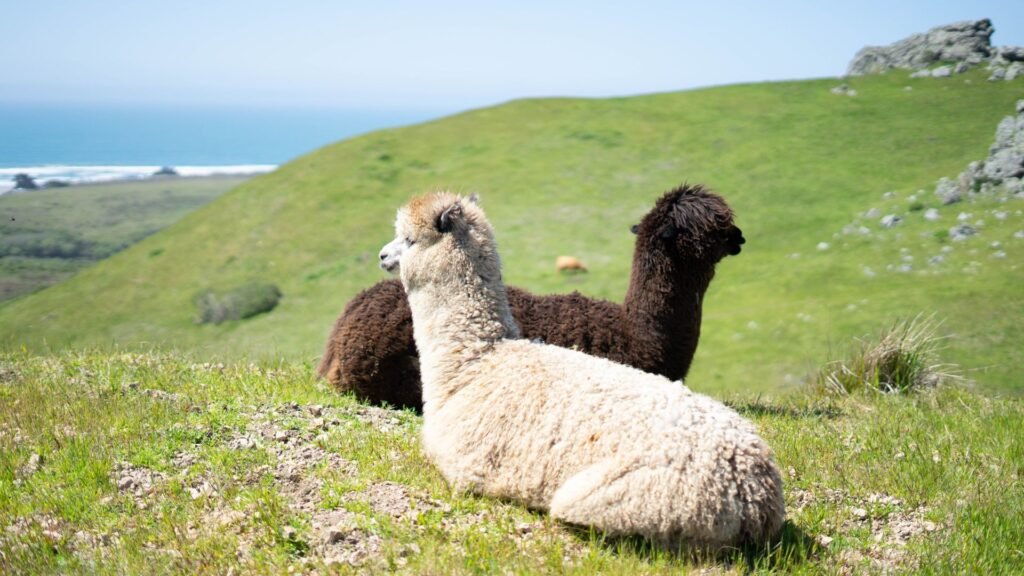Exploring the Idea of Riding Alpacas: Pros, Cons, and Respectful Interactions
Ever wondered if people ride alpacas like they do horses? Well, I’ve got the inside scoop. As a seasoned blogger with a knack for curious topics, I’ve delved into the world of alpacas to bring you some answers.
Alpacas, with their fluffy coats and gentle demeanor, are a sight to behold. But can these adorable creatures double as a mode of transportation? Let’s explore the facts about alpacas and their suitability (or lack thereof) for riding.
Key Takeaways
- Alpacas are social animals and possess their own unique personalities. They thrive on interaction and live in herds within their own communities.
- There are two main types of alpacas: the Huacaya and the Suri, with different physical characteristics such as fluffy, cloud-like coats and long, silky locks respectively.
- Alpacas are much smaller than horses, and also smaller than llamas. Adult alpacas usually stand between 81 cm and 99 cm at the shoulder, and weigh between 48 kg and 84 kg.
- Despite their gentle demeanor and sturdy appearance, alpacas are not suitable for riding, primarily due to their size, body structure and delicate backbone.
- Attempting to ride an alpaca could cause potential harm or discomfort to the animal, considering their slender and relatively fragile limbs which are not designed to carry heavy loads.
- Lastly, alpacas are dedicated grazers with a unique digestive anatomy, requiring extended periods of grazing. This natural process can be disrupted by the physical stress of riding. Therefore, respectful human-alpaca interaction methods should prioritize the well-being of these creatures.
The Fluffy World of Alpacas
Delving further in our journey, let’s take a more in-depth look into the everyday life of these fluffy creatures. Alpacas, originally from the harsh climates of the Andes Mountains, have gained immense popularity worldwide due to their adorableness and charm.
There’s no denying how alluring these creatures are. Their big, round eyes and fluffy coats have won the hearts of many. But there’s more to alpacas than meets the eye. To truly understand if they’re suitable for riding, you need to know them better.
Alpacas are social animals. They live in herds and thrive on interaction. Living in isolation can cause them stress. Essentially, alpacas are not lone wolves – they prefer the company of their own kind.

These creatures could be categorized into two types, the Huacaya and the Suri. Huacaya alpacas have fluffy, cloud-like coats and are the most commonly seen variety. On the other hand, the Suri alpacas have long, silky locks that hang down and are less common.
What’s incredibly fascinating is their personalities. You’ll find that every alpaca has its distinct personality. Some might be outgoing and playful, while others could be more reserved and shy. It’s this uniqueness that adds to their appeal.
| Type of Alpaca | Characteristics |
|---|---|
| Huacaya | Fluffy, Cloud-like Coats |
| Suri | Long, Silky Locks |
They are herbivores, meaning they mainly eat grass and hay. You’ll also notice that they only have lower teeth at the front of their mouths. This feature, while unusual, doesn’t impede their eating habits. In fact, it helps them graze effectively.
Before you start thinking about saddling up, you’d want to keep in mind their size. Alpacas are smaller than horses, and significantly smaller than llamas. Adult alpacas typically stand between 81 cm and 99 cm at the shoulder, and weigh between 48 kg and 84 kg.
| Statistic | Alpaca |
|---|---|
| Height | 81 cm – 99 cm |
| Weight | 48 kg – 84 kg |
Understanding Alpacas: The Basics
Alpacas aren’t your everyday farm animals. They’re a bit of an exotic twist to the livestock industry. People often ask if you can ride an alpaca like a horse or a llama. Well, let’s dive a bit deeper into the world of alpacas and answer that question.
First off, alpacas are herd animals. They’re social creatures who prefer to live and interact in groups. Alpacas come in a variety of shades, from white to black, and even multicolored. They’re a sight to behold, no doubt.

There are two main types: the Huacaya and the Suri. Huacayas have dense, crimped wool that stands upright, making them look fluffy and teddy bear-like. Suris, on the other hand, have silky, pencil-like fibers that hang down, giving them an elegant, dreadlock appearance.
Each alpaca has its own unique personality, much like us humans. Some are docile and friendly, while others can be quite skittish and aloof. Regardless, most are generally curious and gentle creatures.
Alpacas are renowned for their magnificent coats, which consist of hypoallergenic fibers often used in high-end textiles. The quality of Alpaca fiber is determined by several factors such as fineness, length, and color.
Being strictly herbivores, alpacas mainly feed on grass and hay. They also love a snack of vegetables, fruit, and tasty treats. Their diets are carefully monitored as overfeeding can lead to obesity and other health issues.
Finally, let’s consider the size of alpacas. Despite often being mistaken for llamas, alpacas are noticeably smaller, standing just about 3 feet tall at the shoulder. The average weight of an adult alpaca is about 150 pounds. They’re certainly not built for riding, unlike horses or llamas.
While people are accustomed to horseback riding, alpaca riding isn’t a widespread practice. But why is that? Let’s explore that in the next section.
The Anatomy of an Alpaca
Unveiling the anatomy of an alpaca is essential to understanding why they’re not often ridden like horses or llamas. Alpacas are sturdy and versatile creatures, but there are specific aspects of their physical structure that explain their unsuitability for riding.

At first glance, alpacas’ bodies seem robust, their frames cloaked in a thick coat of fleece. They’ve a compact body structure, much smaller and less muscular than horses or llamas. Adult alpacas typically weigh between 120 to 220 pounds and stand around 34 to 36 inches tall at the withers – a significant size difference compared to their horse and llama counterparts.
Likewise, their backbone structure differs from that of a horse or llama. Alpacas possess a relatively flat back with a less pronounced curve in the spinal region. This means a saddle or human weight could potentially harm or discomfort them.
| Horse | Llama | Alpaca | |
|---|---|---|---|
| Weight (lbs) | 900-2200 | 250-450 | 120-220 |
| Height at the withers (inches) | 56-72 | 44-50 | 34-36 |
Considering their leg structure, alpacas have slender and relatively fragile limbs when compared to horses and llamas. Hence, they cannot carry heavy loads, especially loads equivalent to a grown human’s weight, for extensive periods without risking injury.
In the context of digestive anatomy, they’re specially designed to thrive on a diet rich in fiber such as grass and hay. Therefore, alpacas need a significant amount of time for grazing and chewing their cud in order to extract nutrients efficiently.
Through an understanding of these basic aspects of alpaca anatomy, it becomes clear why this creature is appreciated for its fleece rather than as a mode of transportation. Alpacas may not carry us on their backs like a horse or llama, but the richness they add to our lives in numerous other ways is undeniable.
Do Alpacas Have the Potential for Riding?
When sizing up these gentle creatures, the first thing you’ll notice is that alpacas are not built like horses or llamas. For one, they lack the muscular strength and the sturdier backbone structure needed to bear a human’s weight. With their flat backbones and delicate, stick-like legs, even fitting a saddle can pose a serious risk.
Further examining their physical makeup, you’ll find that alpacas are significantly smaller than their equine counterparts. They typically weigh between 120 to 220 pounds, placing them in the size bracket closer to large dogs rather than ponies or small horses. For reference, I’ve drawn up this comparison chart:
| Average Weight (lbs) | |
|---|---|
| Horses | 900 – 2000 |
| Llamas | 280 – 450 |
| Alpacas | 120 – 220 |
Let’s not forget about their unique digestion system. Alpacas are ruminant animals; they have a specialized digestive anatomy that allows them to extract nutrients efficiently by grazing and chewing their cud for an extended period of time. This process takes on average 50% more time than other mammals like horses.
Even walking an alpaca on a leash can be a bit of a challenge, let alone riding one. Anyone considering an alpaca riding session would need to take a step back and understand that an alpaca’s small build and delicate body would make riding harmful and uncomfortable for these lovely creatures. Instead, their value is found in their fleece, and the innate peacefulness they instill in the environments they inhabit.
While horses and llamas can be ridden, nature did not intend for alpacas to serve as a mode of transportation. They may not be rideable, but this in no way diminishes their unique charm.
Pros and Cons of Riding Alpacas
While it’s evident that alpacas aren’t built to be ridden, let’s dig a bit deeper into the pros and cons of attempting this practice.
On the plus side, alpacas are naturally social and friendly creatures, making human interaction generally likeable for them. Their calm temperament and innocent curiosity can make for quite an enjoyable experience. However, we must remember that these interactions rely more on walks with the help of leashes than any form of riding.
Another consideration is that walking with alpacas can offer a wonderful opportunity for physical fitness and outdoor exploration. They’re not fast-paced animals, which brings about a slow, mindful type of walk akin to a peaceful nature hike. Plus, if you’re raising alpacas for their fleece, walking them can help keep their temper calm, ensuring a better quality yield.
On the flip side, the cons stack up considerably more. Importantly, the physical structure of an alpaca is a limiting factor. As mentioned earlier, alpacas lack the muscular strength and sturdy backbone structure necessary to bear the weight of a human. They also have delicate legs, further limiting their ability to serve as riding animals.
Additionally, their unique digestive system calls for extended periods of grazing and cud-chewing. Complex to say the least, this digestive system does not respond well to the stress that riding can introduce.
| Aspect | Pro | Con |
|---|---|---|
| Temperament | Alpacas are social, friendly, and calm. | Riding can stress them out. |
| Fitness | Walking alpacas can encourage physical fitness and exploration | Alpacas’ lack of speed may not provide a rigorous enough workout for some |
| Structure | Lack of muscular strength and sturdy backbone precludes them from riding | |
| Digestion | Stress from riding can disrupt their sensitive digestive process |
Please remember that these aspects do not exactly endorse riding alpacas in the traditional sense. It’s suggested to engage with these marvelous animals using respectful methods that take their unique physiological and psychological traits into account.








Our picks
Alpaca & Wool Felted Sole Inserts: Comfy Upgrade?
Best Alpaca Socks for Hiking: Ultimate Comfort and Durability on Trails
Best Alpaca Halter for Comfort and Control